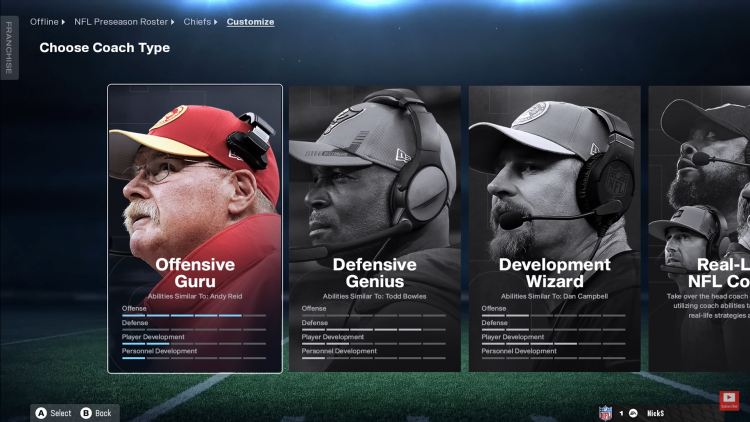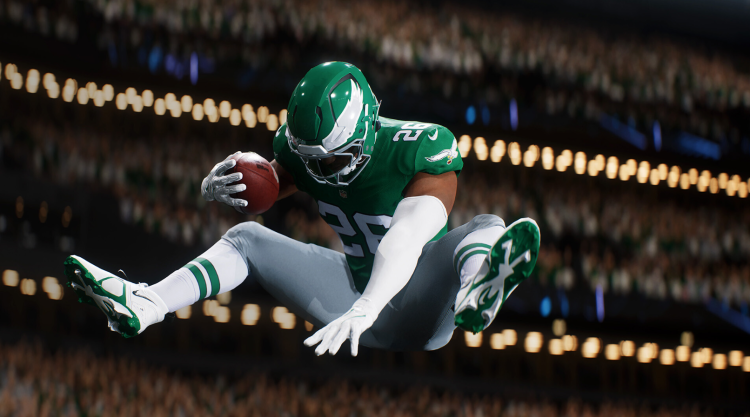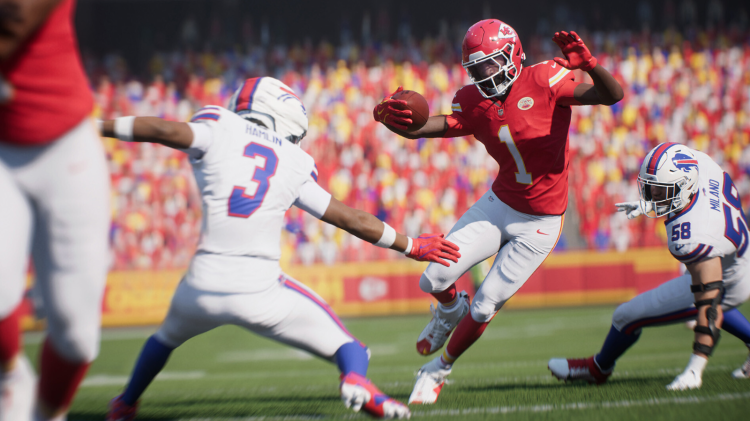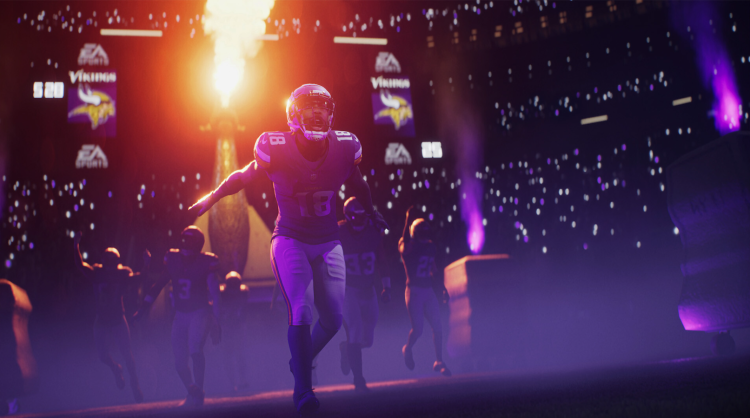Madden NFL 26 Review – The Best Madden in Years with a Revamped Franchise Mode
Madden NFL 26 is the strongest entry in the franchise in years. It’s faster on the field, deeper in Franchise mode, richer in presentation, and smarter in teaching players how to master the game. Superstar mode sees modest upgrades, while Ultimate Team remains profitable for EA but unchanged in philosophy. Not everything lands perfectly—Training Camp minigames frustrate, and some interface delays slow the experience—but the core football gameplay and Franchise depth mark a true leap forward for the series.
Past Maddens have often left fans saying “maybe next year” when long-requested changes failed to appear. IGN’s review highlights just how far this year’s release goes beyond the typical “incremental improvement” cycle. This time, EA Tiburon has followed through on many of those promises, delivering a package that feels ambitious, confident, and noticeably more complete.
A Faster, Smoother Game on the Field
One of Madden NFL 26’s biggest strengths is how it plays between the whistles. The development team has borrowed heavily from College Football 26’s feel, striking a middle ground between that game’s arcade-like quickness and Madden’s traditional, deliberate pace. The result is a flow that feels responsive but still grounded in NFL realism.
Entry into each play is faster, and while it doesn’t match College Football’s breakneck speed, it’s snappier than the slower Maddens of the past. Once you adjust, it’s hard to go back—players coming from Madden 25 will notice the difference immediately.
The game also inherits several quality-of-life features from College Football 26. These include:
- Dynamic substitutions that take effect the very next play.
- On-the-fly custom defensive zones.
- The Wear and Tear system that tracks player fatigue and durability.
- Realistic defensive line stunts and twists.
- Block steering for linemen.
- Interceptions only happening when defenders have sight of the ball.
Passing also gets a boost with new mechanics for back shoulder and pylon throws when using the Revamped Passing option. These add precision to red zone and sideline plays, rewarding skill without feeling overly complex.
Weather effects have been expanded with severe snow and rain games. Visibility, footing, and ball security are all affected—receivers slip off the line, passes are harder to track, and fumbles become more common. Visual touches like accumulating footprints in the snow help sell the atmosphere.

Presentation That Finally Feels Like the NFL
Madden NFL 26 takes its broadcast presentation more seriously than recent entries. Each prime-time slot—Sunday night, Monday night, and Thursday night—has its own intro package and commentary crew. Hearing authentic broadcast-style welcomes, like Al Roach introducing an EA Sports presentation of the NFL, adds to immersion.
Team traditions are also highlighted. From Randy Moss blowing the Gjallarhorn before a Vikings game to Freddie Falcon making a dramatic entrance in Atlanta, these moments give games personality. While College Football has been strong in showcasing traditions for years, Madden now applies the same approach to NFL culture.

A Smarter Skills Trainer
For years, Madden’s Skills Trainer has been functional but limited. This year, it finally gets a complete rework. It now explains advanced mechanics and game systems in detail, breaking down how player ratings influence outcomes.
For example, the kicking tutorial explains the concept of an “overkick” and how it can reduce distance—a detail many long-time players didn’t know. The drills are now organized by skill level, from “Beginner” to “New to Madden,” making it easier to find exactly what you need.
In previous years, much of this depth was left to community-made guides and YouTube videos. Now, Madden teaches itself, giving new players a stronger starting point and veterans a way to master subtler mechanics.

Franchise Mode – The Real Star of Madden NFL 26
Franchise mode has seen meaningful change for the first time in years. While there are some missteps—especially in the revamped Training Camp minigames—the overall package is deeper, more strategic, and more engaging.
The Low Points
Training Camp has fewer minigames than before, limiting opportunities to improve your full roster. For defensive backs and receivers, the selection is especially thin—only one game each. The new “Bucket Drop” passing drill is clunky and forces a control style that some players dislike. Worse still is “DB Battle,” which has been made harder and reduced interception points, making it a dreaded chore each season.
Coaching and Abilities
Coach Creation now offers more outfits, more head models, and the choice of three archetypes: player development, offense, or defense. The old skill tree is gone, replaced by equippable abilities that directly affect game day performance. These can boost specific schemes, improve certain formations, or even impact scouting quality.
Abilities are leveled up through season goals and in-game performance. Play well, and they improve. Play poorly, and they can be downgraded or lost—though you can buy them back with coaching points. This risk-reward approach makes preparation and consistency matter.
Weekly scouting reports now break down opponent tendencies in greater detail, helping you choose abilities that counter them. Planning for Andy Reid’s offense feels very different than facing Mike Tomlin’s defense, adding variety to each matchup.
Playsheets and Play Calling
Playsheets allow you to add specific formations and concepts to your base playbook without building a custom one from scratch. Some formations are only accessible this way. Keeping a base book also grants access to “Coach’s Suggestions,” which use machine learning to recommend plays and explain their purpose.
While some suggestions have low predicted success rates, the explanations help players understand the design behind each play, making it a useful learning tool.

Wear and Tear – Managing Player Health
Wear and Tear means star players can no longer take every snap without consequence. Overusing a top receiver or running back risks injury or performance drop-offs by the fourth quarter. Managing practice intensity and in-game workloads becomes critical, and a personal trainer staff role can boost recovery, reduce injury risk, and improve conditioning.
Injuries now have variable return timelines, influenced by staff decisions. This adds uncertainty and strategic depth to roster management.
Player Development Control
You can now set practice intensity for each individual player, not just position groups. This makes grooming backups more viable and allows precise control over workload and fatigue. Fatigue is now shown as a number rather than just a bar, making it easier to track and manage.
Franchise Presentation Upgrades
Weekly recaps and halftime shows, hosted by Scott Hanson, feature highlights from across the league with live commentary. Staff and player interactions feel more natural—coaches, coordinators, and players respond to your decisions in believable ways. Managing relationships now matters, as morale can affect cooperation and performance.
Superstar Mode – Small Steps Forward
Superstar has added relationship management with coaches, teammates, and peripheral characters like sports psychologists and agents. While the cutscenes are better produced, the choices often boil down to simple yes/no decisions with obvious outcomes.
Training and progression still rely on minigames, and while they work, they lack the depth or draw of Franchise mode. Superstar Showdown provides online competition and cosmetic rewards, but unless you’re invested in the mode, it’s easy to ignore in favor of deeper gameplay elsewhere.

Ultimate Team – Same Model, Smoother Tools
Ultimate Team gets useful quality-of-life tools like Pack Helper, which quickly compares new cards to your lineup and lets you equip or auction them without navigating multiple menus. However, the mode’s core monetization remains unchanged.
It’s still a pay-to-win ecosystem designed to encourage spending through randomized rewards—a structure critics see as exploitative, but one that continues to be enormously profitable and popular.

Verdict – The Leap Madden Needed
Madden NFL 26 feels like the payoff for years of slow, incremental progress. On-field play is sharper and more dynamic, Franchise mode is richer than it’s been in nearly a decade, and presentation finally feels like a real NFL broadcast.
Superstar mode could use a bigger overhaul, Ultimate Team’s monetization remains divisive, and some UI frustrations hold it back from perfection. But for the first time in a long time, the improvements aren’t just small steps—they’re a genuine leap forward.
This is the year that “maybe next year” became “this year.”

Comments